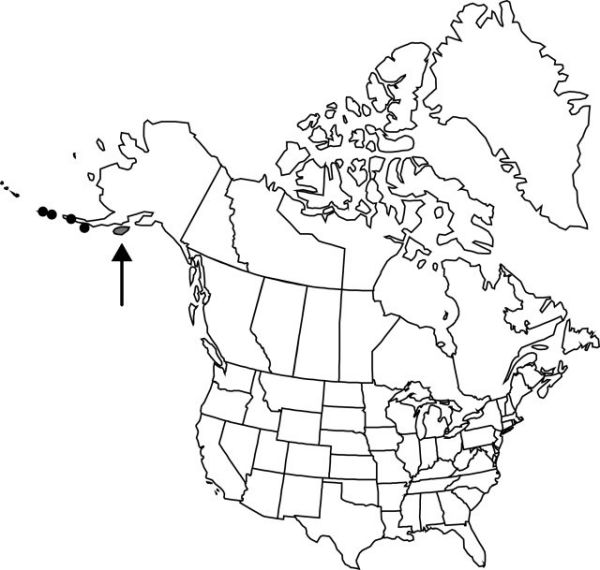Cypripedium yatabeanum
Bot. Mag. (Tokyo) 13: 91. 1899.
Plants erect, 17–32 cm. Leaves 2(–3, very rarely), on middle half of stem, alternate to subopposite, wide-spreading; blade elliptic-lanceolate to lance-ovate or ovate-suborbiculate, 6–12 × 3–7 cm. Flowers solitary; sepals white to yellowish or greenish with brownish or tan markings; dorsal sepal obovate to ovate, 15–23 × 9–18 mm; petals spreading, same color as sepals, acuminate-subpandurate to acuminate-pandurate (constricted near middle), flat, 10–14 × 5–8 mm, much shorter than lip, margins undulate-revolute; lip similarly colored, oblance-fusiform to oblance-ovoid, 17–32 mm; orifice basal, 10–22 mm; staminode oblong-quadrangular to broadly ellipsoid or ovoid. 2n = 20.
Phenology: Flowering Jun–Aug.
Habitat: Mesic tundra, swales, marsh borders, beach dune lags
Elevation: mostly 0–200 m
Distribution

Alaska, Asia (n Japan, Kamchatka).
Discussion
Cypripedium yatabeanum is known from only a few collections in North America and hence the description may be too restrictive. From the much more common and widespread C. guttatum, it is distinguished by flowers with pale brown markings and a markedly narrow aspect, with comparatively narrow lip, short, often pandurate petals constricted toward the middle, and narrower dorsal sepals commonly broadest toward the apex. Asiatic plants are sometimes considerably larger than those of C. guttatum, and robust Japanese plants sometimes bear three leaves. Plants typical of Asiatic C. yatabeanum occur on some of the Aleutian Islands, while on other islands, plants with brownish markings appear morphologically intermediate between these taxa, or more typical of C. guttatum. Elsewhere in southern Alaska, populations of typical C. guttatum support some plants with pale brownish pink markings. This situation has suggested to some that these taxa were only infraspecifically distinct. The distribution of the intermediate plants, however, suggests that geographically limited introgression during an earlier, more extensive presence of C. yatabeanum is an appropriate interpretation. Evident introgressants have been named C. ×alaskanum P. M. Brown, and most reports and illustrations of C. yatabeanum in Alaska are in fact based on them.
Selected References
None.